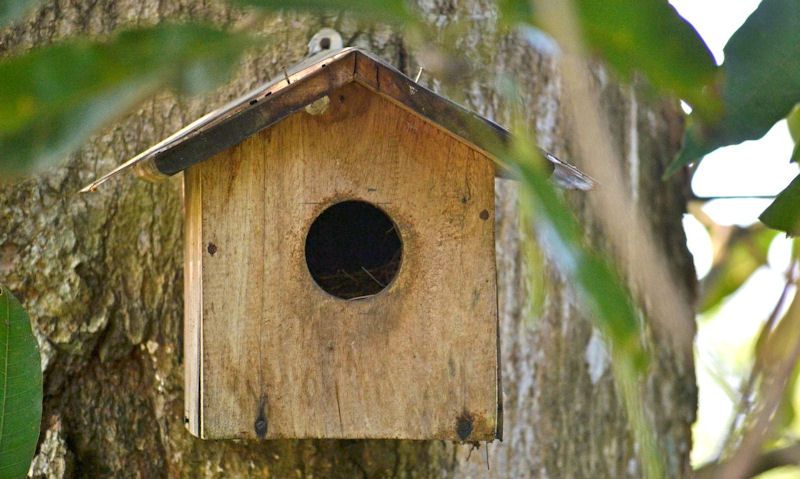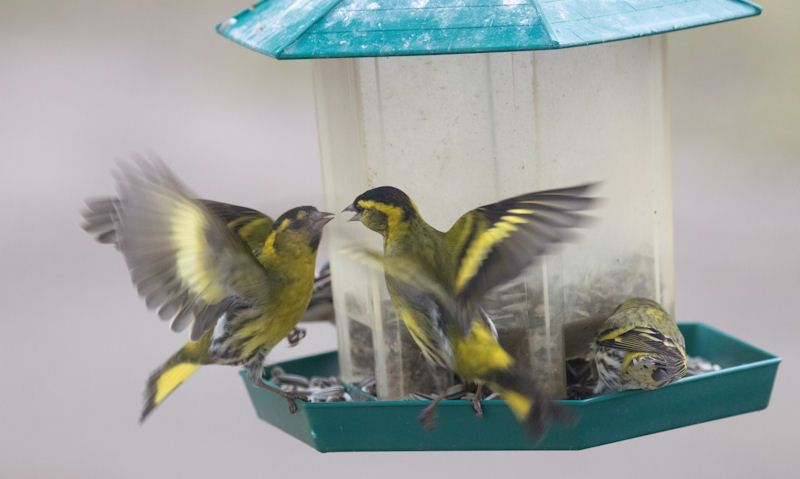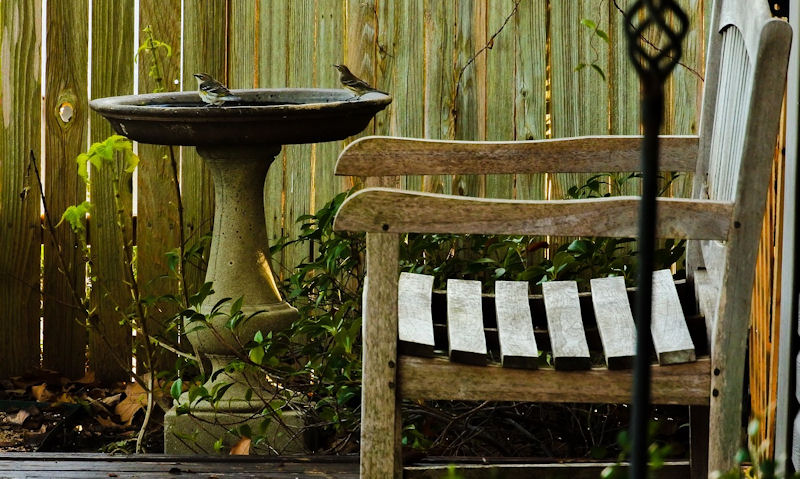Should I put anything in my bird box
What you put in the floor of your bird box will help the nesting process along by offering certain birds a quick way to get up and running in no time.
Few wild birds require help from people; with Owls, Woodpeckers and Willow Tits happy to accept human intervention. Well all natural materials should be used to imitate what they would normally use in the wild, you can only lay a light foundation on the floor of the bird box, well birds will line it with feathers.
Well our advice is mostly focused on what materials to use for certain bird species along with there unique bird box design, know that is not necessary.
What we mean is wild birds are perfectly capable of building up a nest in the box with no help from you required; just putting up a box for them is all you need to do.
Its a delicate operation building up a nest site out in the wild, with time and energy needed to structure there nest actually how they like it.
With your intervention it may not be to there liking, those deterring the birds all together.
What you should be doing it focusing on the bird box foundation only; with a light covering of dead leaves, grass or twigs needed.
Refer to requirements below well each bird species are picky with nesting materials.
When putting anything in your bird box just make sure it only cover the floor; does not build up to the entrance hole; and doesn't cover ventilation or drainage holes on the base.
Natural nest material
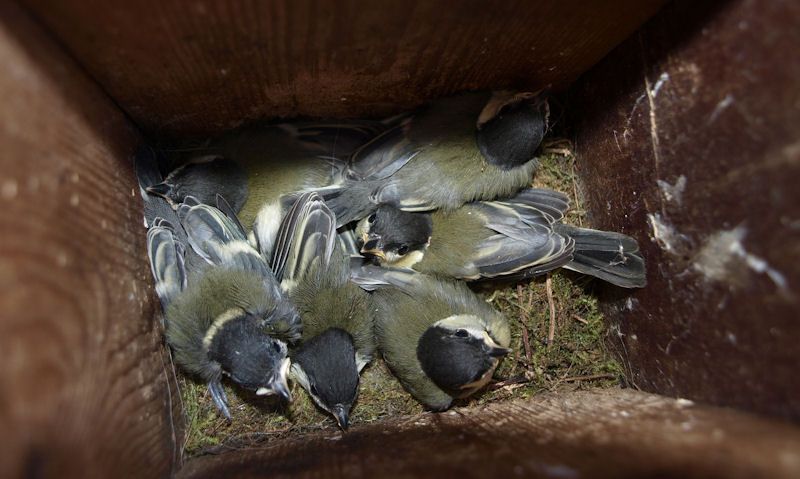
When putting anything in a bird box of yours, it would be best to imitate the natural materials used by the bird species its intended for.
Setting the foundation most birds will start with use of wigs, leaves, grass, bark or woodchipping; with most of these materials easily plucked out of the wild from you.
However, its after you've layered a light foundation it becomes out of your hands.
Its now up to the wild birds to line the foundation with feathers that are usually built up by the female, so that further excludes you from offering anymore help.
Well all that refers to the small birds in your garden, know that owls and Woodpeckers would also welcome your intervention by laying down a foundation of commercially available woodchippings and sawdust.
Non-fussy birds like Starlings may nest in any bird box with an untidy foundation laid down, but try to keep is reasonable.
Birds will take care of it
To be perfectly honest about whether you should put anything in your bird box, to be blunt no, you don't and probably shouldn't bother filling the box with anything.
Well owls or a Willow Tit will welcome people providing a nest for them inside the box, regardless, all wild birds can take care of it themselves.
Know that lining a foundation in your box will not harm them, you may offer the wrong materials or if not properly educated, use poisonous materials that will harm the birds.
So with that in mind, only use materials we've mentioned above or the following in detail.
Lay the foundation
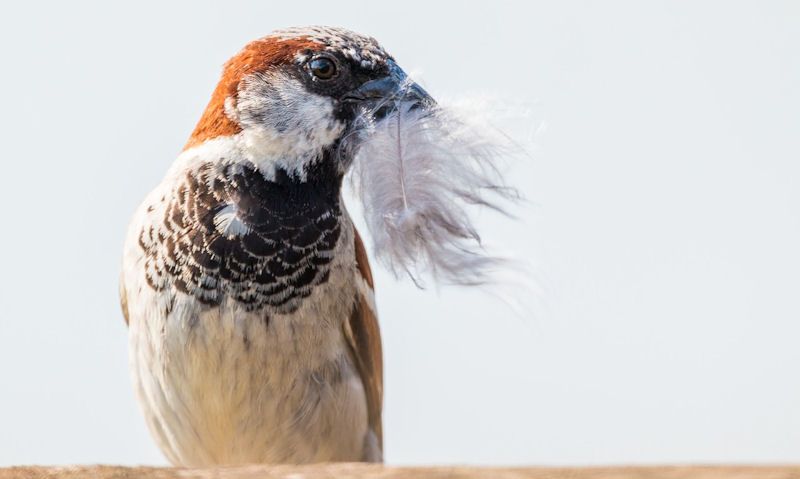
To make up a nest inside a bird box it would be wise to know the most common natural materials wild birds use when setting up nests in trees.
Most birds that use nest boxes would lay the foundation with use of anything from twigs, bark, to woodchippings and leaves.
To tempt the birds to use your box you only need to lightly lay the foundation with any of these materials if available.
Lining the box would then be taken over usually by the female well using features, hair and grass.
Robins
It would be a good idea to start the Robin nest box with a 1 inch thick foundation of dead dried leaves on the bottom of the box.
If the entrance hole to the box is shallow to the floor then it might be a good idea to use less leaves as to not overflow the box.
This thick foundation of dead leaves must be dry as to not rot the bird box interior, but ideally you would want to use a mix of leaves to satisfy the needs of the Robin.
That's it, the Robin will now fill up the rest of the box with twigs, dried grass and materials that would overflow the box, protruding out of the entrance hole.
Hence the reason we don't recommend creating a thick foundation of leaves.
Wrens
Wrens build there nests out in the wild similar to that of the Robin, likewise, a bird box would be designed to that of a Robins box with a large rectangular entrance hole.
And as Wrens are know to steel a box currently occupied by that of a Robin, you could go the same way and lay a foundation of dead leaves.
With that in mind you have the freedom to build up a larger layer of leaves as the Wren doesn't usually build up the rest of the nest with twigs or dried grass.
Wrens would rather line the dead leaves or whatever foundation they built up with the use of feathers, a common material used by smaller birds.
Tit Family
Despite the close family bond that connects the Tit family, they do build nests differently out in the wild so its not a case of one fits all.
The Crested Tit would normally line the box with deer hair, fur and similar light materials on top of a grass, bark or woodchipping foundation.
The Willow Tit is probably the only wild bird to be happy for humans to fill the bird box for them, with use of soft excavatable materials so they can make changes.
Well the female Willow Tit would build the foundation with use of soft rotten wood such as elder, it would be wise to use such material if available.
That also includes the use of grass, bark and woodchippings, which is not often used by other Tits in the family.
However, the Long-tailed Tit are known to build remarkable nests, using a feather lining that would account for more than 2000 journeys.
The Long tailed Tit box may also include man-made items such as that of paper which is suitable to put in a box, but not polystyrene which they may use.
It would be difficult to imitate the Long-tailed Tit nest, so you might want to leave it over to them this time.
The three remaining Tits in the family, namely the Blue Tit, Coal Tit and Great Tit may be happy with a foundation of soft, dried grass if you wish to put anything in there box.
Sparrows
Both the Tree Sparrow and House Sparrow are known to build untidy nests with use of grass and straw, of which they will line it with feathers.
The Tree Sparrow will take to bird boxes so therefore will be happy to move into a box that is lined with materials they would normally build with.
And remember, Sparrows are colony nesters so what's good for one nest box, is good for all Sparrow boxes you have close by or next to one another.
Again, the House Sparrow's natural nests are incredibly untidy structures with use of grass and straw, lined with feathers.
You only need to lay the foundation of the box or colony boxes with dried grass and straw, well they will take care of lining it with feathers.
House Martin
The unique half-shell shaped nesting box of the House Martin located under eaves of the house are shallow already, so the use of materials should be left to the House Martin.
We would not recommend you start up the House Martin nest box for this reason alone, as a shallow box would result in material falling out or the birds not taking to it.
High up under the eaves the box is located would make it difficult to fix the homemade bird box as is; so for safety reasons don't play with the box by lining it yourself.
Jackdaw
Big bird requires a fairly large bird box, so any materials you used inside the box would be of a larger quantity.
The Jacdaw nest out in the wild is usually a heap of twigs, lined with grass and other materials they may find in there journey.
And as this material is readily available, it shouldn't take long to build up the interior with small twigs with a bunch of dried grass.
When lining the box make sure the ventilation and drainage holes are not blocked up.
Nuthatch
Nuthatches must be the most fussy of bird nesting box occupants; vary much like there nest out in the wild, they go to amazing lengths to adapting the box to there liking.
This starts by narrowing the entrance hole to the size of its body, before lining the interior with mud, rounding off the corners so the hole imitates that of the inside tree.
Its this complexity that goes into there nesting build that takes it out of our hands.
Pied Flycatcher
Pied Flycatcher's natural nest are made from bark - with honeysuckle bark if available - before being lined with fine grass.
Imitating the natural nesting material inside a bird box made for a Flycatcher maybe doable, simply use a soft dry bark before lining it with again, fine dried grass.
It won't always be possible to strip bark off a honeysuckle shrub so head into the woods or forest and bring back what you can find.
During rainy days the materials will all be wet, so its vital you dry them out in the house before building up the foundation inside the box.
You may want to save cut grass from the lawn well laying it out on a wall to dry up.
Starling
Well the male Starling builds the foundation for the bird box with use of grass in a careless manner, its all made tidier with the female Starling adding a feather lining.
As the nest foundation is made of grass this should make it incredibly easy for you to source, with any straw you can get your hands on.
If you have a guinea pig or pet rabbit then this same straw will be suited to the Starlings bird box, well the grass in your garden will do.
Starling bird boxes are made more lengthier than similar boxes, with the hole positioned nearer the top with lots of space below it.
You might want to build up a foundation made of grass and straw 2 to 3 inches. Any higher will bring the floor to far up to the entrance hole, which is not desirable to a Starling.
Owls
Owls are easy to cater for in terms of materials used to line there nesting boxes, with a significant amount of sawdust and woodchippings needed.
Like the Willow Tit, Owls will welcome you laying the foundation of there box, with up to 2 to 3 inches of both sawdust and woodchippings required.
One or the other might do, but a mix of the two would be better suited.
Sawdust must be from that cut from natural wood such as pine, beech or oak - or even plywood - but never use MDF.
It can be quite harmful to humans so will be hard on owls when breathing in the fine dust.
Woodchippings used to line the hutch of rabbits or guinea pigs are perfectly suitable, with a small or medium size bag needed to line the owl nesting box, as they're quite big.
Woodpecker
Building up a foundation for the Woodpecker bird box is similar to that made for the owl, with 2 to 3 inches of sawdust and woodchippings covering the floor of the box.
Woodpecker bird boxes can still be large, but not so big that you need as much material required in bigger, owl boxes.
Still you'll need to use a mix of both materials to line the floor of the box, well the Woodpecker will take care of the rest.
Entrance hole height from the floor of the box is vital for a Woodpecker to nest, so don't use so much material that is heightens the nest to far up.
So again, 2 to 3 inches of sawdust and woodchippings will do.
